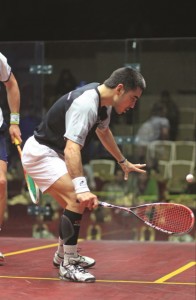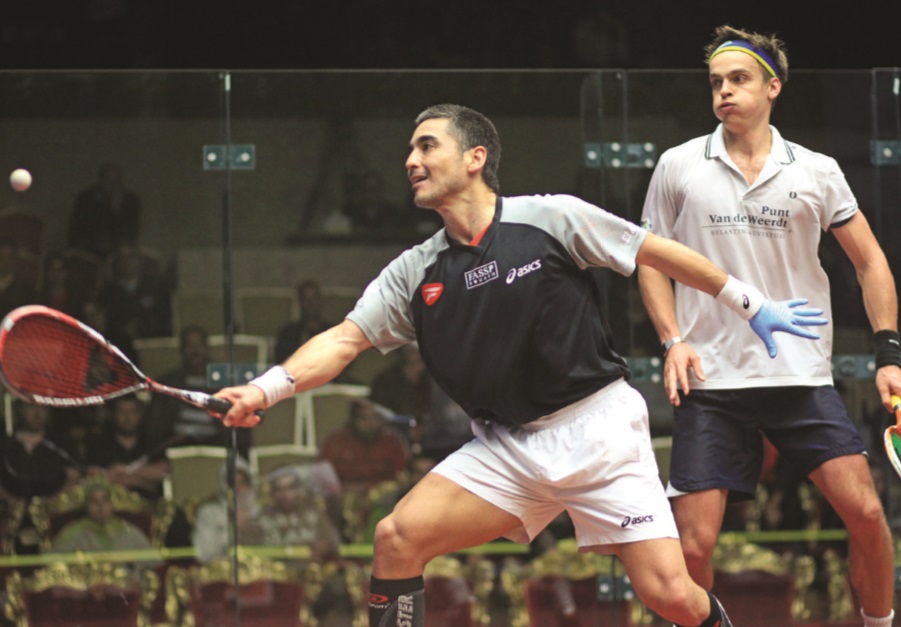By Richard Millman
There is a story—how much of it is true I am not sure—that when Nick Matthew achieved the laudable ranking of 100 in the world, he had occasion to video his backhand and, on watching the tape, was very disappointed with the quality of his technique. He then, so the story goes, spent two years rebuilding it until it became the clinical, almost surgical weapon that helped him become the best player in the world.
The story illustrates the absolutely imperative nature of excellent and precise set up.
As I have said before in this column, there are certain fundamental techniques that every squash player should have tattooed on their very souls. One of these is a deep understanding of how to create a ninety-degree angle between the racquet and the direction that you wish the ball to go in.
This is a relatively simple procedure in situations where you have plenty of time. First, as soon as you recognize whether you are going to have to play a forehand or backhand, you must prepare your racquet. The size of your preparation is dependent on either the time you have available or that you wish to use. But, assuming you have and wish to use plenty of time, a full preparation is in order.

Next you ‘listen’ to the feed- back your preparation gives you as to where to maneuver yourself in order to create a ninety-degree angle of approach to the ball relative to the direction that you are visualizing hitting your shot. Visualization, as I have said before, is a key asset for a squash player.
Having ‘measured’ your distance and set up with the racquet ‘prep,’ you then start your legs working, so that they both start your recovery and your weight transference into the ball simultaneously. Momentarily after you start the legs working you release the swing, thus flowing through the stroke and back into position in tandem with the ball, actively hunting your opponent’s next shot as soon as the ball comes off of your racquet.
This is what to do with plenty of time.
Unfortunately opponents are not in the habit of giving time very freely and we often find that our set-ups, whatever our good intentions, are slightly off or en- cumbered by obstacles such as the side and back walls.
The good news is that once you have perfected the basic ninety-degree set- up technique, there are some advanced skills that you can use to maintain that ninety-degree angle of contact when under pressure or dealing with awkward circumstances.
I call this skill set: ‘Head Turn Progressions.’
You may have noticed that top players from time to time turn their heads, and even their bodies, away from the ball and the direction that they are hitting as they strike the ball.
They do this to micro-manage the precision of the ninety-degree angle of strike.
There is a very simple formula that you can follow to develop this skill, although you will need help from your coach with the most difficult situations.
Next month, we will give you the five- step formula to develop your head turn progression.






